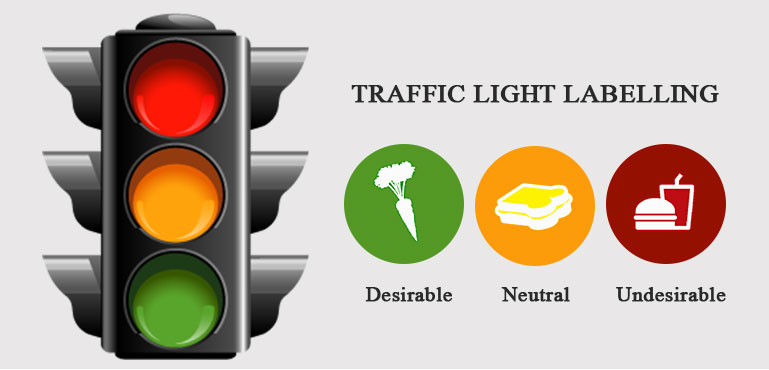Traffic Light Labeling System

In 2007, Food Standard Agency of UK developed a method of labeling food with a traffic light showing how much fat, sugar and salt are in that food. High Content (unhealthy) is shown by red, Medium (moderate) by amber and Low (healthy) by Green colors. Food with Green color is preferred over the ones with red color. This is called as Traffic Light Labeling System. The main objective of Traffic Light Labeling guidelines is to
- Allow consumers to correctly identify healthier food products
- Assist consumers to make comparison between products easily
- allow consumers to make these comparisons at a glance.
The label is supposed to be in front of the package and easier to spot.
HOW DOES THE FOOD LABELING SYSTEM WORK
The traffic light labeling system uses three colors:
RED
It indicates that the food is high in fat, sugar or salt. It is best to avoid these kinds of food and can be eaten only rarely.Unhealthy
AMBER
This indicates that content of fat, sugar or salt is medium in these foods and can be eaten occasionally though not on a regular basis.Moderate
GREEN
This colour indicates it is low in fat, sugar or salt and can be eaten or consumed regularly. It is the healthiest of choices.Healthy
For every product the amounts of key nutrients (fat, saturated fats, sugars and salt) are given in grams per 100 grams or 100 millilitres, as a uniform reference value. Consumers interpret this information, with the common traffic light colours of red, amber or green, depending on whether the product contains high, medium or low levels of the respective nutrient.
IS TRAFFIC LIGHT LABELING SYSTEM FOLLOWED IN INDIA?
Traffic Light labeling is not followed in India yet. However, Consumer VOICE is using traffic light rating to help consumers make an informed choice. It is important to let consumers know about the amount of fat and sugar that they are consuming since such foods are linked with obesity and non-communicable diseases like hypertension, and high blood pressure. As part of a pilot project, Consumer VOICE did a study in schools, covering about 10 schools, and Consumer VOICE took the samples of the canteen food and drinks and then it was analyzed for fat, saturated fat, sugar, salt, and converted the results in terms of the traffic lights.
